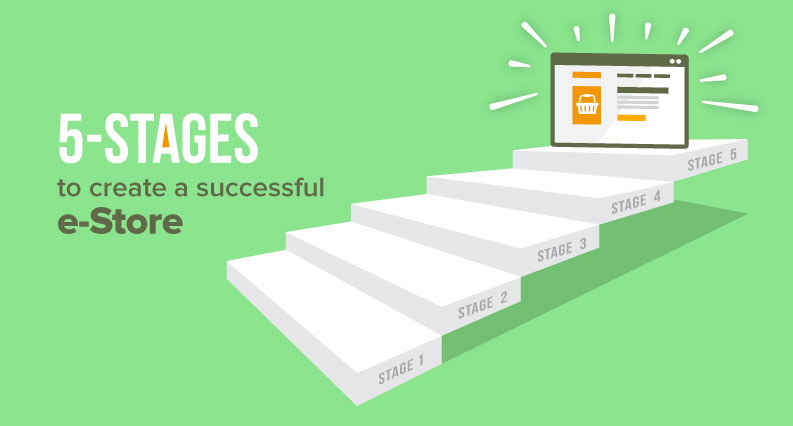To found a startup, technology is as much important as unique ideas for entrepreneurs looking to start an ecommerce store. The entire startup ecosystem pushes the use of technology to the edge and throws the challenge of being innovative. You can easily gauge the growth of ecommerce businesses that began at a small level but ascended rapidly; innovation played critical role in their quick development.
The shift in consumer behavior coupled with technological breakthroughs has led the ecommerce industry to fathom the changing user requirements and thrown down the gauntlet to new businesses. The key difference between failure and success of ecommerce stores, particularly the multi-vendor ecommerce businesses, lies in initial steps taken to develop and launch them. Various things related to branding, investment, marketing, and many more play an important role in the future prediction of an ecommerce business, with special emphasis on multi-vendor stores. Your focus on the most important things will favor when setting up an ecommerce store.
LetÔÇÖs have a look at the five important steps to consider when starting a multi-vendor ecommerce store successfully:
1. Picking a Market
Viewing the current scenario, it is preferable for the growth of a business that you choose a niche market and come with something unique. To attain long-term success, an idea should have certain attributes, which help a product/service establish as a brand and earn loyal group of consumers.
Warren BuffetÔÇÖs this quote aptly defines what it takes to gain commercial success, ÔÇ£ for a product to be profitable, it should have three things, such as, it should be in demand, the process of making it should be difficult, and finally, it should be simple enough to become a necessity.ÔÇØ
For a multi-vendor ecommerce marketplace to be successful, it is a matter of utmost importance that it should offer something, which is unique and challenging for others to build. Market research should be conducted to know the various product ideas and areas where those products are much needed.
2. Testing the water
Judge the viability of selected ideas before venturing into a market segment. One should know the magnitude of the competition they will face once they set foot on the battlefield. However, it may happen that the same product idea may be difficult to compete in certain country, but much easier in a different country. By using analytics and market research reports conducted by other company, the product demand can be estimated.
Another important factor to consider is competitors. If the competition is very difficult, then it is wise to rethink the strategy. Besides analytics and market reports, another tool to consider is Google Trends, as it can help you see the search pattern of a particular area or continent.
Recommended Reading: 5 Niche Ecommerce Businesses You can Start with YoKart
3. Business Planning & Research
Branding is as essential as breathing is for human beings. It is the brand itself that makes its place in the hearts of its audience, but to establish a new business as a trusted brand requires strategic planning. Before diving into details, there are few things to keep in mind. It is important to consider things like investment model, sources of revenue, marketing strategy, and more in the research phase before finalizing the marketing plans. Surveys and campaigns act as important sources to make a well researched plan. Since it is essential for businesses to know where its potential customers are, research and planning also crucial for in lead generation.
4. Online Store Development
The above steps play a crucial role in planning the what, why and how of starting an ecommerce business. However, when it comes to building the actual product, then usually there are two options available, which are:
- Hire Developers to develop from scratch
- Find a readymade multivendor system that can be customized as well
Custom development can be time-consuming and highly expensive if you hire a development firm. They will plan, design and develop your site from scratch whereas a turnkey solution will get you the same site in few days. A turnkey solution helps you install a readymade website, which is most inexpensive and takes few hours to get into action.
A dedicated multi-vendor ecommerce platform enables entrepreneurs to set up a future-proof multi-vendor website and takes less time & investment as compared to hiring developers to build it from scratch.
5. Pre-Launch (Digital Promotion)
Many startups come up with unique ideas and launch websites around the best idea. But even the best ideas tend to fail or never scale-up due to more focus on product development. Marketing should begin at the early stages; in-fact right after you have finalized logo, business name, revenue model, etc. It is in this phase where you need to contact vendors for on-boarding, and shoppers aware of your upcoming business through social media and other websites.
Ignoring this stage is a dreadful move for any multi-vendor business, as these businesses largely depend on traffic. If you do not work beforehand on improving your position on search, social and overall web platform, you will delay the growth process and everything will begin after the site is live. Do the warm-up before you have actually built your store.
Discuss with multi-vendor ecommerce business idea with our experts for a successful launch. You can book a free demo of our Online Marketplace Software.



